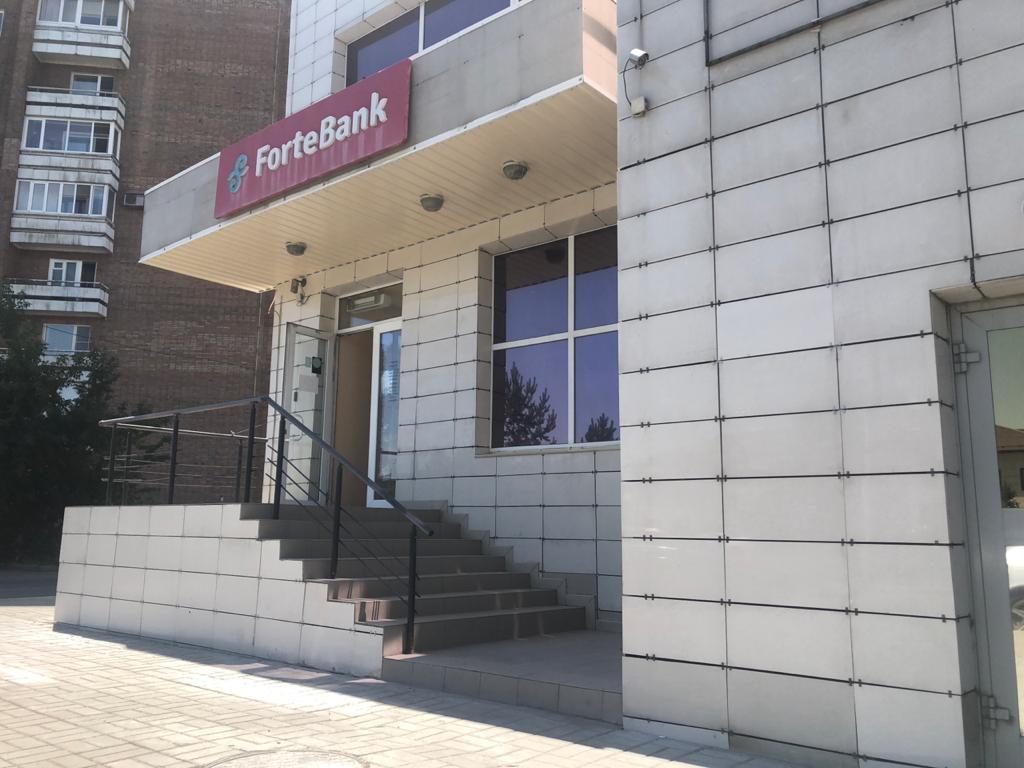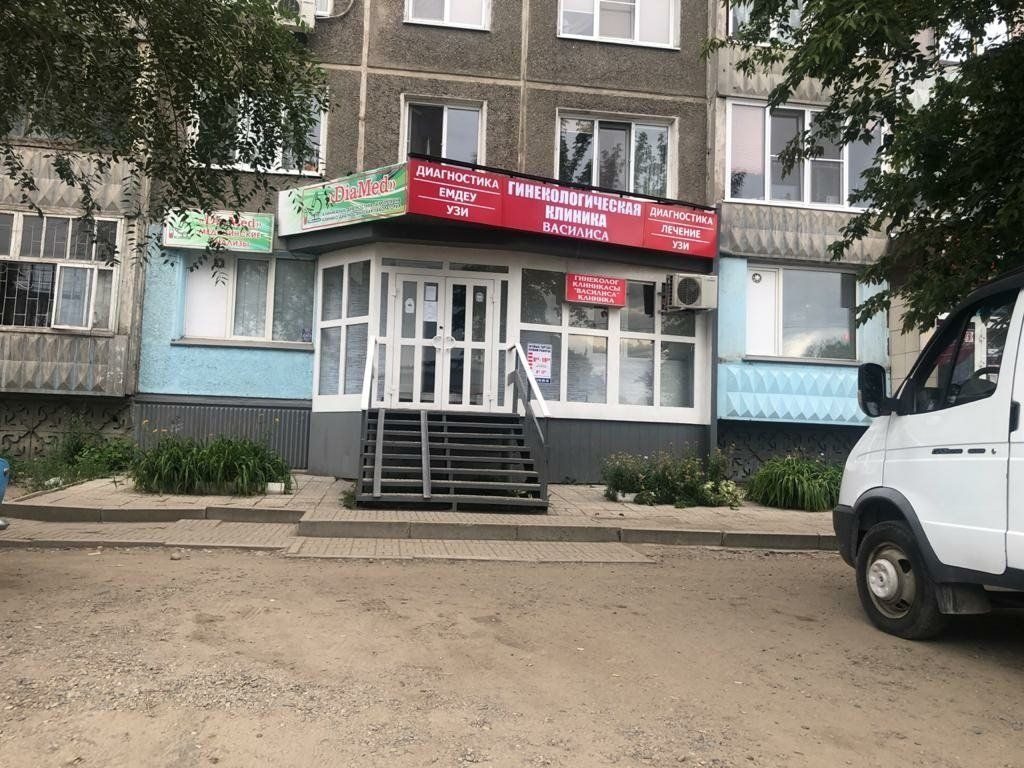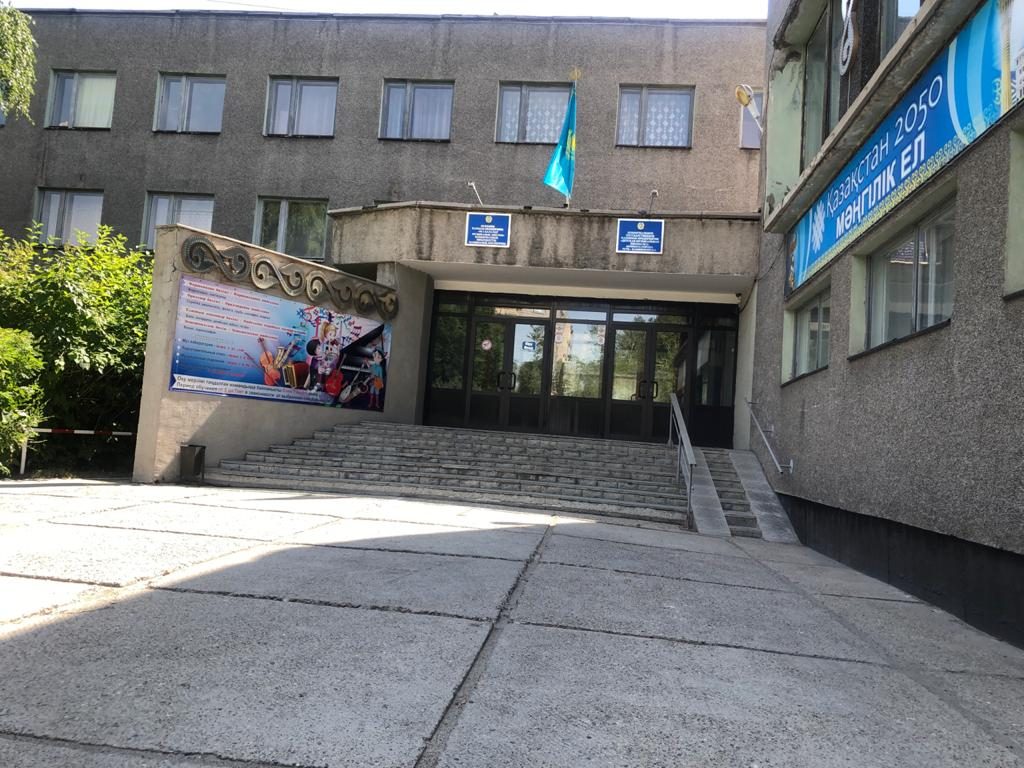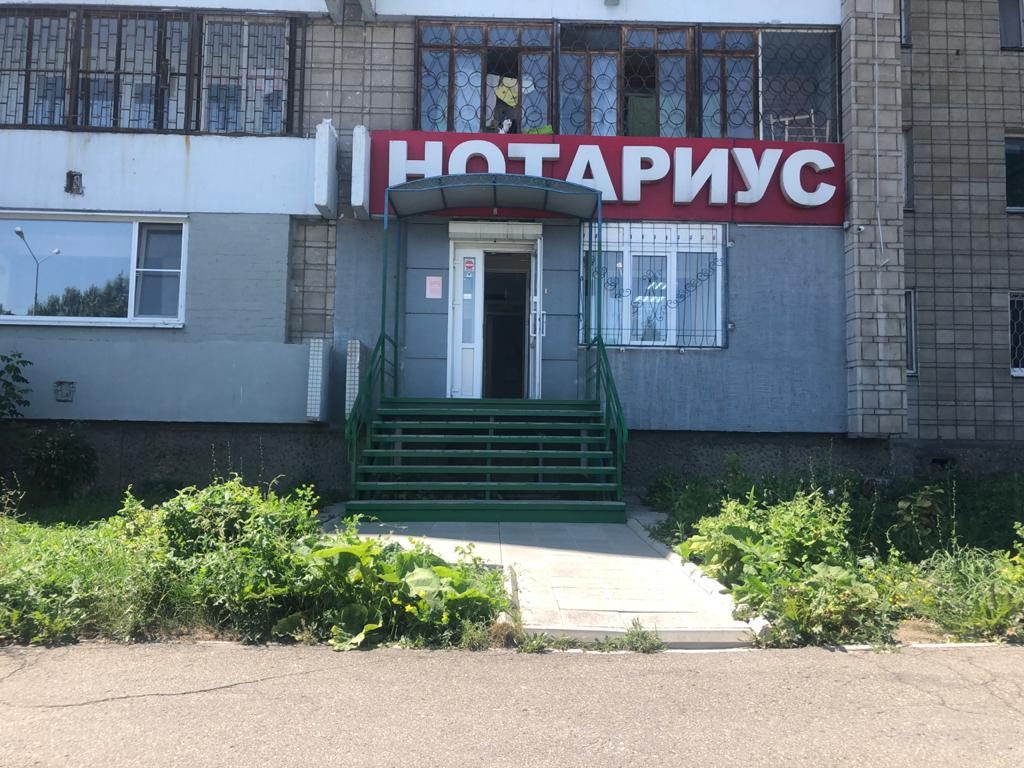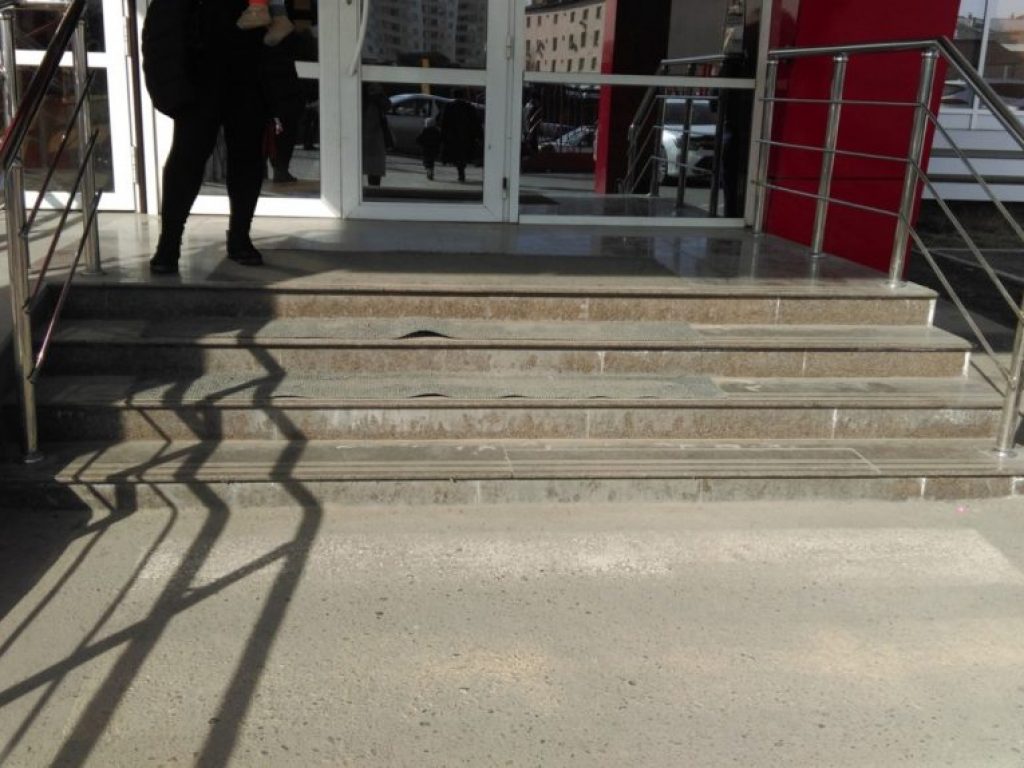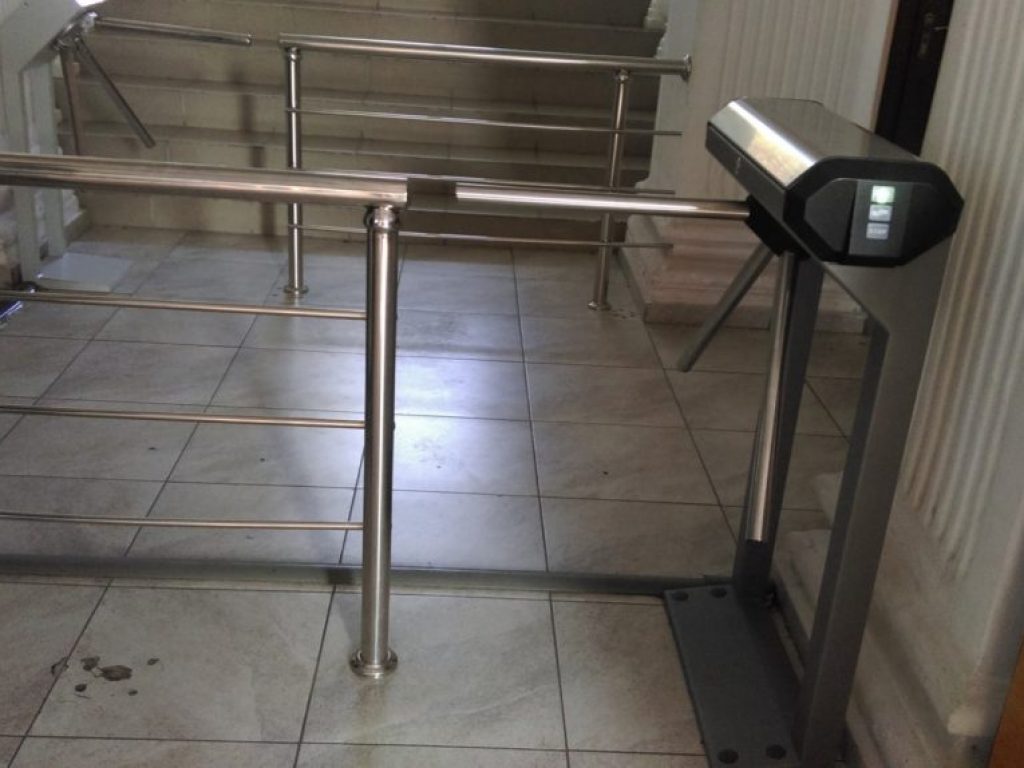According to experts, in Kazakhstan, about 80% of facilities are inaccessible for people with disabilities, and 20% can be considered partially accessible.
Follow us on LinkedIn
According to official data as of January 30, 2021, over 696,464 people with disabilities live in Kazakhstan. By place of residence (cities and villages), they are distributed almost evenly.
By gender, 56% are men and 44% are women.
By age, the distribution is more homogeneous – 86% of Kazakhstanis with disabilities are over 18 years old.
Starting from January 2019, the Accessible Kazakhstan online map is being implemented in Kazakhstan. It shows the civil society representatives’ rating of accessibility level of urban facilities and services for people with disabilities.
The interactive map helps finding out how convenient a certain building is for people with disabilities. For example, it shows if there is a wheelchair ramp, sound devices, tactile paving, if it is possible to access it on a wheelchair, etc.
By analogy with the international traffic light system, the facilities are marked with icons of three colours. The green icon means that the facility is accessible, yellow – partially accessible, red– inaccessible.

Such information helps the users to plan their day and movement around the city, to avoid visiting inaccessible stores, pharmacies, etc., and, if it is necessary to get to a particular facility, to know all the details in advance.

According to the experts, this is necessary not only for people with disabilities.
“Many people need a barrier-free environment,” says Alexandra Sharonova, accessibility expert, co-author of the Accessible Kazakhstan project. “The parents pushing baby strollers, the elderly, pregnant women, temporarily injured people, people with luggage, and others also need accessible environment. According to our information, this is at least 40% of the country’s population.”
Two Maps – Two Opinions
The official state resource reflects the authorities’ opinion on accessible environment. In 2015, the Ministry of Labour and Social Protection of Population of the Republic of Kazakhstan created the portal “Interactive Accessibility Map – Accessible Environment”, which contains information on accessible facilities for persons with disabilities.
According to social activists, in fact, it was a “map for government agencies” – people with disabilities almost did not use this tool.
Currently, this resource still exists, but the website is inactive. The current interactive accessibility map is published on the information portal “Social Protection of Persons with Disabilities” of the Ministry of Labour and Social Protection of Population. At the end of March 2021, it contained data on 35,677 facilities.

The doskaz.kz map is used as its alternative often. However, Alexandra Sharonova believes that it is incorrect to compare the map created by state and that by civil society, because the first shows mainly state institutions, while the second focuses on business facilities: stores, pharmacies, cafes, etc., which people visit much more often.
“In addition, the representatives of government agencies follow the outdated standards during monitoring. Our checklists are up-to-date,” says the expert.
As she admits, the number of facilities monitored by the civil participants of the project does not allow making reasonable conclusions.
“This number does not allow assessing the situation statistically clearly and reliably,” the expert explains. “Not even all the cities of the country are considered (87 settlements have city status in Kazakhstan, 56% of the population live in them – Ed.). Rural areas are not represented (villages are just starting to join the project – Ed.). The largest number of monitored facilities in one city is 3,200, but there are much more socially significant places.”
Nevertheless, the collected data represent the overall picture. There are mainly red and yellow icons on the Accessible Kazakhstan map. That is, for the most part, the public space in the country is either inaccessible or partially accessible. A person with disability or a person with limited mobility needs help to move around it.
Situation in Cities
Ust-Kamenogorsk faces the worst situation. According to the project’s regional coordinator Anna Mazaeva, of the 3,200 facilities rated on the map, only 11 are accessible for people who use wheelchairs, only 10 are accessible for people with hearing loss, and none is accessible for people with vision impairment.
For example, the monitoring group’s members documented the damaged staircases, the absence of handrails, steep ramps, the absence of tactile indicators at the entrances to the buildings of the regional department of State Architectural and Construction Control, the Construction Department of Ust-Kamenogorsk and the city Department of housing and utilities, passenger transport and highways.

The pharmacies, a clinic for women, as well as facilities directly providing services to people with disabilities, for example, a hearing rehabilitation centre, a spine disorders clinic, turned out to be inaccessible. The situation is also unsatisfactory in “accessible” schools, shopping malls, service centres of mobile operators.
Photo by the participants of the Accessible Kazakhstan project.
According to the project coordinator in Shymkent Dilbar Umarova, many facilities in the city are marked with red icons on the accessibility map.

“The organisations must make the entrance to their buildings and spaces inside accessible to everyone,” she notes. “However, in most cases, either the ramp does not comply with the standards, or a person, even after entering the building, cannot use the services, since there is furniture in the narrow corridors, stairs, and no elevators. This is also inaccessibility”.
The monitoring of the pharmacies (the places people with disabilities visit the most) revealed either the absence of ramps or the steep ramps, narrow entrance doors, the entrance doors difficult to open, multiple doorsteps higher than 1.5 centimetre.
“These obstacles deprive some citizens of our city of the opportunity to receive a service,” says Umarova.
Photo by the participants of the Accessible Kazakhstan project.
According to Sharonova, Almaty is especially inaccessible for people with limited mobility, because of its rough terrain due to geographical features. The best situation is in Pavlodar, where “the accessible public spaces are created.”
Why Is the Law Not Working?
Nevertheless, Pavlodar also shows a tendency relevant for all Kazakhstan: inaccessible buildings are still being constructed here. Only 1 out of 24 buildings monitored by the expert last year was accessible. Another example is an inaccessible school commissioned here in 2020, which was constructed with budget money.
“Almost all schools in our country are inaccessible for children with disabilities,” Sharonova said with indignation. “When they report that certain number of children with disabilities are receiving the educational services, they do not say that most of them study at home. This is sad, because all children must attend school and study inclusively. However, there are no conditions for that.”
According to her, situation is similar with kindergartens, although all educational, healthcare and state institutions should be 100% accessible. The expert believes that it is necessary to prohibit construction of inaccessible facilities with budget funds at the legislative level, as well as to consider accessibility during the design stage.
“Kazakhstan ratified the UN Convention on the Rights of Persons with Disabilities back in 2015, but there have been no significant changes since then,” concludes Alexandra Sharonova. “If there were any, it was due to the efforts of the civil society.”
She notes that, at the same time, despite some weaknesses and failures, the Kazakh legislation, in particular, construction standards are already following the European standards. Another issue is the low level of their implementation. The expert links this with the lack of systematic work of the government agencies, an insufficient level of social responsibility among entrepreneurs, the incompetence of construction and design companies, etc.
She explains this by the lack of accessibility experts and specialists and the absence of academic discipline for training such personnel in universities and colleges of Kazakhstan. The question of demand to introduce such discipline has been addressed to the government agencies for more than a year. So far, there is only one online training course on the creation of a barrier-free environment, developed by the public fund “Tandau Foundation”.
Reasonable Accommodation
At the final republican conference of the Accessible Kazakhstan project, the head of the “Tandau Foundation” Irina Bobkova stated that it is possible to speak about the absence of facilities in Kazakhstan that are 100% accessible to all categories of people with limited mobility.
“Personally, I do not know a single [facility], and none of our partners knows,” she said. “Such facilities, apparently, do not exist in our country. In my opinion, we have about 80% of inaccessible objects, and 20% can be considered partially accessible”.
A human rights activist Tatyana Chernobil also shared some of the results of the legislation analysis carried out as part of the preparation of an alternative report to the UN on the rights of persons with disabilities in Kazakhstan. For example, in accordance with the National Plan to Ensure the Rights and Improve the Quality of Life of Persons with Disabilities of the Republic of Kazakhstan until 2025, the concept of “reasonable accommodation” was enshrined at the legislative level.
“Reasonable accommodation” means necessary and appropriate modification and adjustments not imposing a disproportionate or undue burden, where needed in a particular case, to ensure to persons with disabilities the enjoyment or exercise on an equal basis with others of all human rights and fundamental freedoms.
Convention on the Rights of Persons with Disabilities
However, Chernobil notes that the norms are recommended for implementation only in visitors’ service areas of public facilities and for retail and consumer services.
“At the same time, in public facilities, “the allocation of special rooms near the entrance adapted for providing service to people with disabilities” is considered as reasonable accommodation. In the organisations providing trade and consumer services, the conditions for the purchase of goods should be created in a special accessible room,” the expert notes.
To Make Common Cause Without Fighting
A program director of the «Erekshe Tandau-Shelek» Corporate Fund and a member of the Coordination Council under the Ministry of Labour and Social Protection of Population of the Republic of Kazakhstan Zahira Begalieva emphasizes that ensuring accessibility is a direct responsibility of the state. This should concern not only a consortium of NGOs, but also a collaboration of various sectors, departments and organisations.

She admits that government agencies often work only on paper. In particular, there are questions about the certification of accessible objects: who and how carries it out; if they have enough competencies and knowledge, if they have information about the different accessibility elements for each category of persons with disabilities, if there is a one-sided approach, if the inspectors are guided by the desire to just fulfil the plan, etc.
However, it is necessary to cooperate.
“Our strategy is make common cause together without fighting,” she says. “The mission of both the state and NGOs is the same – to improve the quality of life of people with disabilities in different spheres, including ensuring accessibility.”
Therefore, she considers it important to use all possible types of cooperation between NGOs and government bodies: meetings, round tables, joint inspections. Such joint campaigns include also controversial ones, when officials or celebrities use a wheelchair and experience the accessibility of urban space.
When Red Turns Green
“Now, the society understands that disability is not a medical, but a social problem,” says Alexandra Sharonova. “If there were no barriers for people with disabilities, they could independently move around in public spaces, receive information, and do whatever they want.”
Moreover, today, the question is broader: not only about the formation of an accessible environment for people with disabilities and people with limited mobility, but a universal design – that is, creating an environment considering the interests and needs of all groups of the population.
According to Irina Bobkova, Kazakhstan could become a country with a universal design long ago, if people with temporary limited mobility changed their position.
“Everyone, even people without disabilities, was in this category several times in their life,” she explains. “However, for example, even the mothers with children or people with injuries do not identify themselves with this group, considering their situation to be temporary. Without getting involved in the process, they do not require anything, believing that since they are in such a situation for a short time, they can endure and find some solutions.”
The process of forming an accessible environment, according to the project participants, is developing slowly. However, the main thing is that it is developing, and the situation is changing. For their part, the members of the consortium of NGOs intend to continue developing the project, adding new facilities to the map and expanding its geography.
In February 2021, at a meeting of the Ministry of Labour and Social Protection of Population of the Republic of Kazakhstan following the results of work for 2020 and setting tasks for 2021, the head of the department Serik Shapkenov stated that in order to ensure an accessible environment, the task is to adapt more than 4 thousand facilities annually. This year, the share of adapted facilities should be 20%, by 2025 – 100%.
Meanwhile, the President of Kazakhstan Kassym-Jomart Tokayev defined the current situation with the accessibility of facilities as unacceptable.
“We even introduced the administrative liability for non-compliance with accessibility requirements, but the current standards are still being violated everywhere. In practice, people with limited mobility do not always have an opportunity to leave their home and go outside on their own, not to mention – to get to any facility and move around inside. This alarming and unacceptable situation needs to be urgently changed,” said the head of state, speaking at the fifth meeting of the National Council of Public Trust on February 25, 2021.


